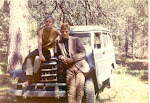
“Having seen a small part of life, swift to die, men rise and fly away like smoke, persuaded only of what each has met with…Who then claims to find the whole?”
- Empedocles, On Nature
Jay David Bolter’s book, Writing Space: Computers, Hypertext, and the Remediation of Print, remains an essential read for one pursuing both a career in English and vast knowledge of the intricacies of web text and hypermedia. He gives his reader not only a history lesson of the writing process but also a torrent of new information involving technology. To begin with, Bolter’s explanation of Ekphrasis incorporates the history of the actual term. Ekphrasis is an ancient method for conveying visual ideas with the first attempts at a written language. Indeed, the Greeks had forms of written communication though spoken thought prevails their ancient time period. They had stubborn difficulty perfecting a lateral and linear scale for writing. Pictorial presentation presented the Greeks with an anomaly; and frankly they were less than thrilled with the challenge. (This is not to say that the Greeks didn’t relish a good quarrel; they just preferred control and tradition a great deal more.) Basically, writing was a means to remember what to say. “The word myth, taken from the Greek mythos, literally means ‘utterance’ or ‘something one says’… [g]reek myth was originally an oral phenomenon, transmitted by word of mouth’ (Harris 11).
Bolter also offers the reader the idea that the Renaissance marks the cross-over of the oral tradition. Thus we have the Age of Print, etc. But, let’s get back to Ekphrasis. The actual concept chimes primitive ways of Deconstruction (i.e. the loveliest and most chaotic way to interpret a text). In layman’s terms, Ekphrasis swallows itself and emerges later as butterfly. Visual representation sculpted a written pattern. The pattern gave way to the basis of a written language yet continued to flutter and fluctuate until our humanism allowed for the inevitable evolution to pollinate. Like Deconstruction, Ekphrasis must first “undermine” itself and mean absolutely nothing; leaving only the visual symbol (icon) as an open portal for interpretation. And then Voila! A playful art slithers forth; a colorful way to be! Oh! Drat this blog attention span!! I’m getting carried away…
To sum up the dither and the blather, Bolter jives on meshing our roots with the idea that print has most definitely morphed into an entirely new creature.
- Empedocles, On Nature
Jay David Bolter’s book, Writing Space: Computers, Hypertext, and the Remediation of Print, remains an essential read for one pursuing both a career in English and vast knowledge of the intricacies of web text and hypermedia. He gives his reader not only a history lesson of the writing process but also a torrent of new information involving technology. To begin with, Bolter’s explanation of Ekphrasis incorporates the history of the actual term. Ekphrasis is an ancient method for conveying visual ideas with the first attempts at a written language. Indeed, the Greeks had forms of written communication though spoken thought prevails their ancient time period. They had stubborn difficulty perfecting a lateral and linear scale for writing. Pictorial presentation presented the Greeks with an anomaly; and frankly they were less than thrilled with the challenge. (This is not to say that the Greeks didn’t relish a good quarrel; they just preferred control and tradition a great deal more.) Basically, writing was a means to remember what to say. “The word myth, taken from the Greek mythos, literally means ‘utterance’ or ‘something one says’… [g]reek myth was originally an oral phenomenon, transmitted by word of mouth’ (Harris 11).
Bolter also offers the reader the idea that the Renaissance marks the cross-over of the oral tradition. Thus we have the Age of Print, etc. But, let’s get back to Ekphrasis. The actual concept chimes primitive ways of Deconstruction (i.e. the loveliest and most chaotic way to interpret a text). In layman’s terms, Ekphrasis swallows itself and emerges later as butterfly. Visual representation sculpted a written pattern. The pattern gave way to the basis of a written language yet continued to flutter and fluctuate until our humanism allowed for the inevitable evolution to pollinate. Like Deconstruction, Ekphrasis must first “undermine” itself and mean absolutely nothing; leaving only the visual symbol (icon) as an open portal for interpretation. And then Voila! A playful art slithers forth; a colorful way to be! Oh! Drat this blog attention span!! I’m getting carried away…
To sum up the dither and the blather, Bolter jives on meshing our roots with the idea that print has most definitely morphed into an entirely new creature.





No comments:
Post a Comment